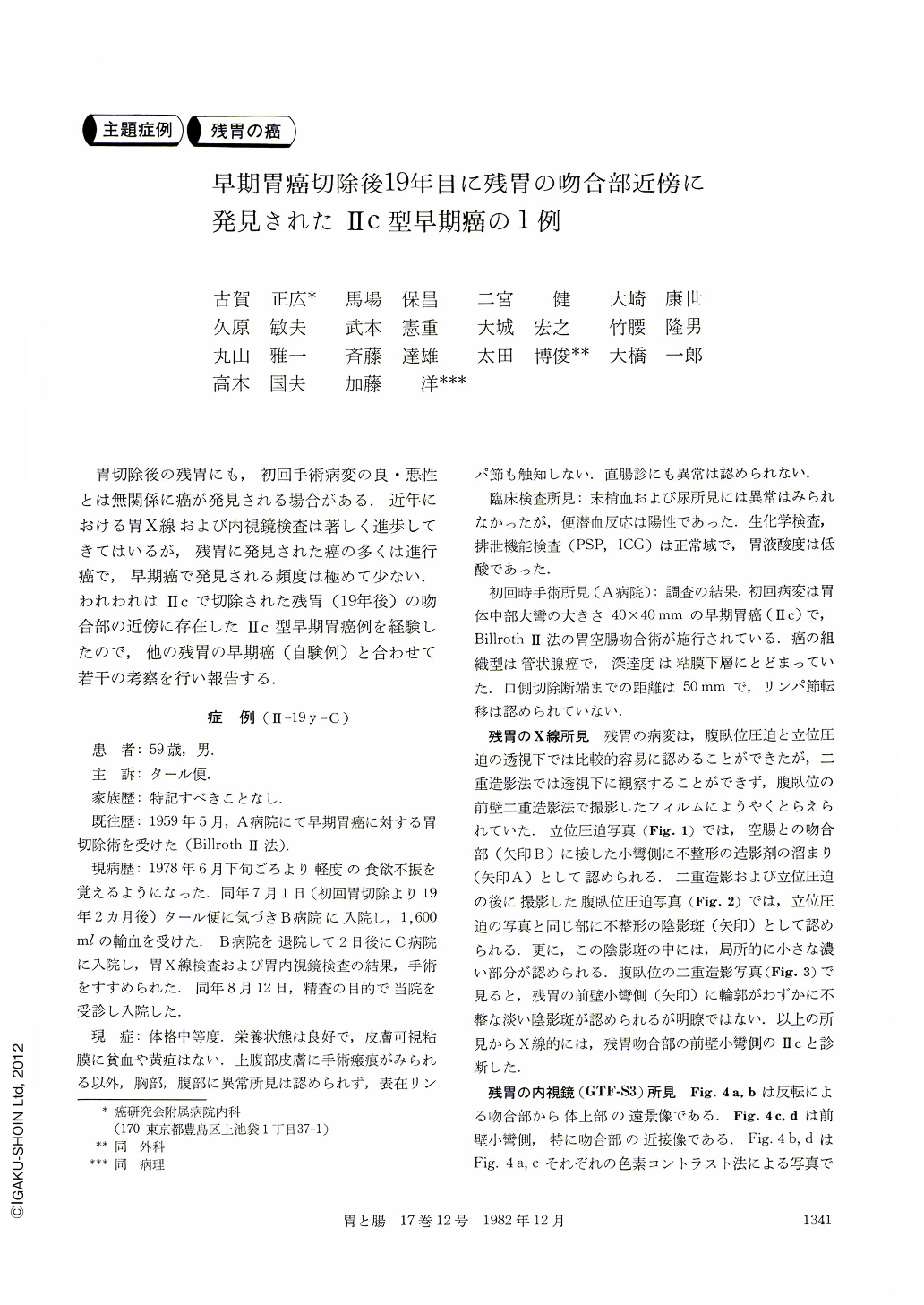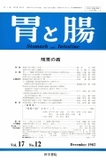Japanese
English
- 有料閲覧
- Abstract 文献概要
- 1ページ目 Look Inside
胃切除後の残胃にも,初回手術病変の良・悪性とは無関係に癌が発見される場合がある.近年における胃X線および内視鏡検査は著しく進歩してきてはいるが,残胃に発見された癌の多くは進行癌で,早期癌で発見される頻度は極めて少ない.われわれはⅡcで切除された残胃(19年後)の吻合部の近傍に存在したⅡc型早期胃癌例を経験したので,他の残胃の早期癌(自験例)と合わせて若干の考察を行い報告する.
In June 1978 the patient, a 59-year-old man, became aware of having tarry stools; because of which he visited a certain hospital, where he underwent radiological and gastroendoscopic examinations and was advised to undergo an operation. In August of the same year he was admitted to our hospital to undergo a thorough examination.
The patient had an operation for an early gastric cancer performed in May 1959. Scrutiny of data obtained at that time revealed the following findings: macroscopically, there was noted an early type Ⅱc cancer located on the greater curvature side of the middle portion of the gastric body, measuring 40×40 mm. Histopathologically, the tumor was identified as adenocarcinoma tubulare spreading to, but not beyond, the submucosa. The lesion was situated about 50 mm from the proximal gastric stump. Findings of examination on admission: Stomach x-ray (upright compression and prone compression films) disclosed an irregular barium fleck on the cardiac side of the lesser curvature at the anastomotic site. On double contrast gastrography in the prone position only a faint fleck of barium was noted. Endoscopy revealed a slightly discolored area distinct from the surrounding mucosa on the lesser curvature side of the anterior wall near the site of anastomosis. Evaluation of a biopsy specimen taken from that area led to a histological diagnosis of adenocarcinoma tubulare. Diagnosed as a shallow early type Ⅱc cancer of the remnant stomach developed at the site of anastomosis, surgical removal of the remnant stomach was performed in August 1978.
Operative and pathological findings: The cancer was identified histologically as adenocarcinoma tubulare. The lesion was 30×20 mm. Cancerous infiltration, for the most part, was limited to the mucosal membrane, with only part of the malignant cells at the center of the cancerous lesion being found to have infiltrated the submucosal layer. The lesion was located 2 mm from the site of gastrojejunostomy and separated therefrom by a zone of pyloric mucosa that had undergone intestinal metaplasia. It was noted that the surrounding mucosa was affected with a slight degree of gastritis cystica polyposa. There was no evidence of lymph node metastasis. As of July 1982 the patient was alive and well.

Copyright © 1982, Igaku-Shoin Ltd. All rights reserved.


